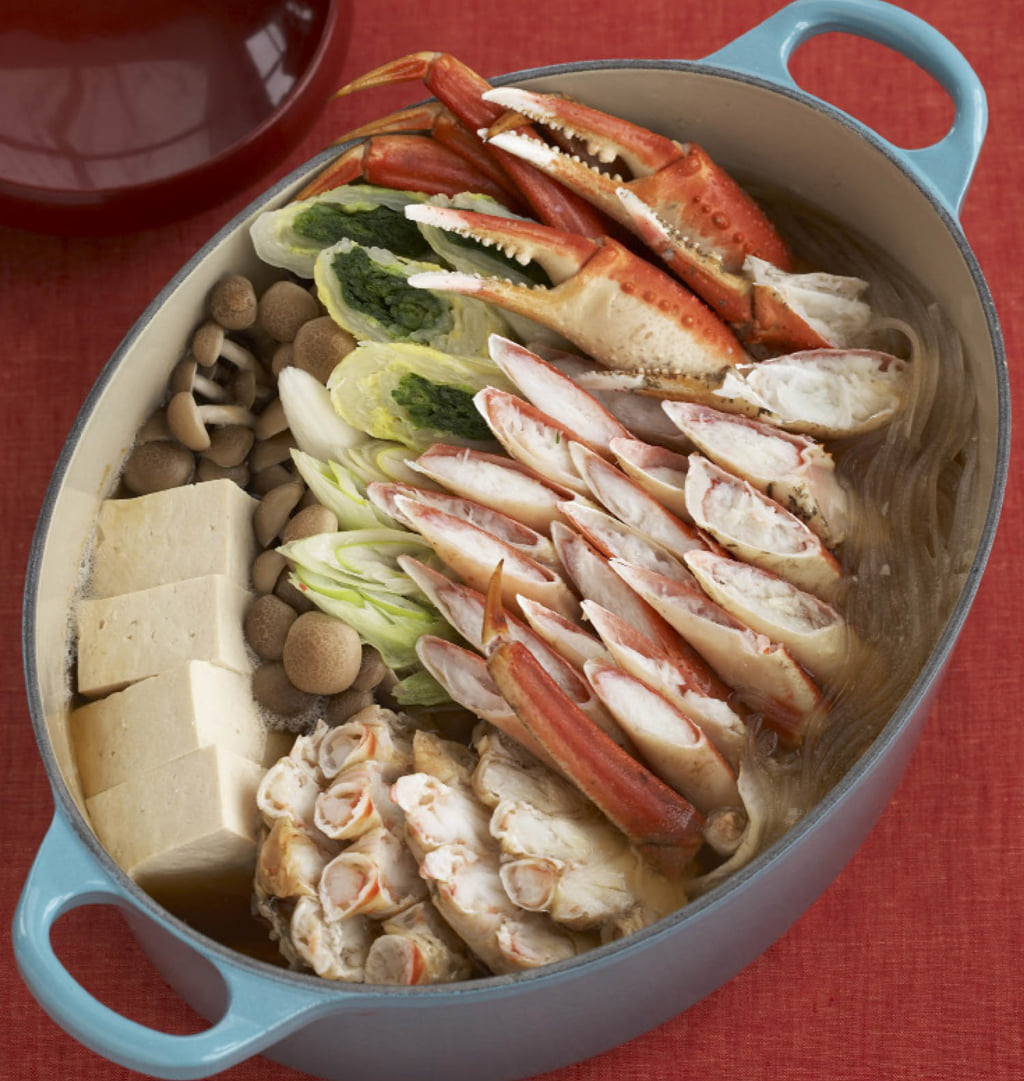Tadashi Ono and Harris Salat’s Crab Hot Pot
This ‘kani nabe’ showcases a crustacean found on the island of Hokkaido in a recipe known for its difficulty, simplified here by the chefs.

Ten Speed Press
Kani nabe is a typical Japanese dish served in winter. It is very popular, especially on the island of Hokkaido, Japan’s northernmost region, which is known for the quality of its crustaceans. Made using fresh crab and vegetables in dashi made from seaweed or bonito flakes, it is served at the table in the earthenware dish used to cook it.
This recipe is known for being difficult to make as the crab needs to be cooked skilfully to avoid becoming too dry. But chef Tadashi Ono and food journalist Harris Salat deliberately chose to include it in their book Japanese Hot Pots to demystify this traditional Japanese dish.
Before eating, the chefs advise: ‘Eat the crab first, as soon as it’s ready, followed by the other ingredients. This way, it will be at its most tender and will slide out of its shell easily.’
Japanese Hot Pots features salty broths and healthy ingredients that are easy to get hold of, such as seafood, poultry, green vegetables, roots, mushrooms, and noodles. Cooked in classic receptacles, they require very little preparation and no special equipment.
Serves 4
Ingredients
900 g crab, precooked or raw, cut into pieces
1 l dashi
125 ml usukuchi soy sauce
125 ml mirin
30 g harusame, soaked in water for 15 minutes
1 napa cabbage-spinach roll, sliced
1/2 pack (about 225 g) firm tofu, cut into four pieces
1 negi, sliced on an angle into 5-cm pieces
100 g shimeji mushrooms, trimmed and pulled apart
60 g momiji oroshi, for garnish
120 g shibori scallions, for garnish
Method
To make the crab easier to eat, with a sharp, heavy knife, cut through the crab’s leg joints, slice off strips of shell, and cut incisions into the claws.
Prepare the broth by combining the dashi, soy sauce, and mirin in a bowl. Set aside.
Place the harusame on the bottom of a hot pot. Add the crab, slices of napa cabbage–spinach roll, tofu, negi, and shimeji mushrooms to the top of the harusame, arranging each ingredient in a separate, neat bunch. Pour in the reserved broth.
Cover the hot pot and bring it to a boil over high heat. Decrease the heat to medium and let simmer for five more minutes.
Transfer the hot pot to the dining table. Serve the ingredients together with the broth in small bowls. Garnish with the momiji oroshi and the shibori scallions.
Japanese Hot Pots (2009), by Harris Salat and Tadashi Ono, is published by Ten Speed Press.
Harris Salat and Tadashi Ono have written other cookbooks together, such as Japanese Soul Cooking and The Japanese Grill.

Ten Speed Press
TRENDING
-
A House from the Taisho Era Reveals Its Secrets
While visiting an abandoned building, Hamish Campbell discovered photographs the owner had taken of the place in the 1920s.

-
The Taboo-Breaking Erotica of Toshio Saeki
The master of the 1970s Japanese avant-garde reimagined his most iconic artworks for a limited box set with silkscreen artist Fumie Taniyama.

-
With Meisa Fujishiro, Tokyo's Nudes Stand Tall
In the series 'Sketches of Tokyo', the photographer revisits the genre by bringing it face to face with the capital's architecture.

-
Masahisa Fukase's Family Portraits
In his series ‘Family’, the photographer compiles surprising photos in which he questions death, the inescapable.

-
Hajime Sorayama's Futuristic Eroticism
The illustrator is the pioneer for a form of hyperrealism that combines sensuality and technology and depicts sexualised robots.





